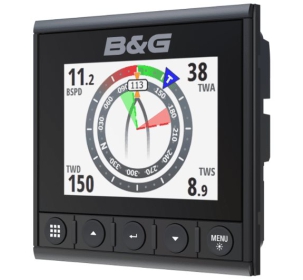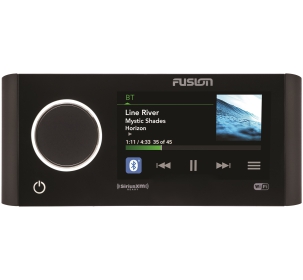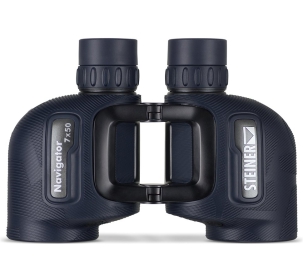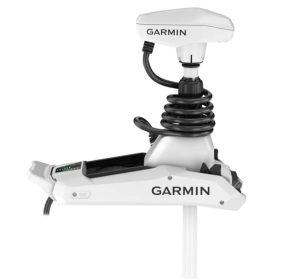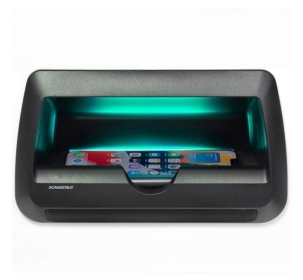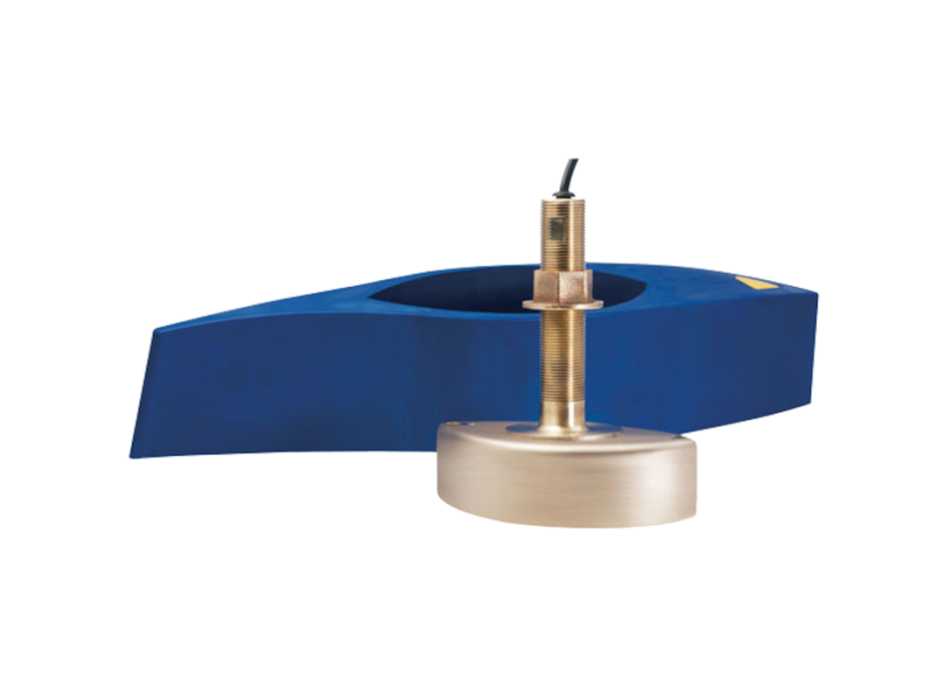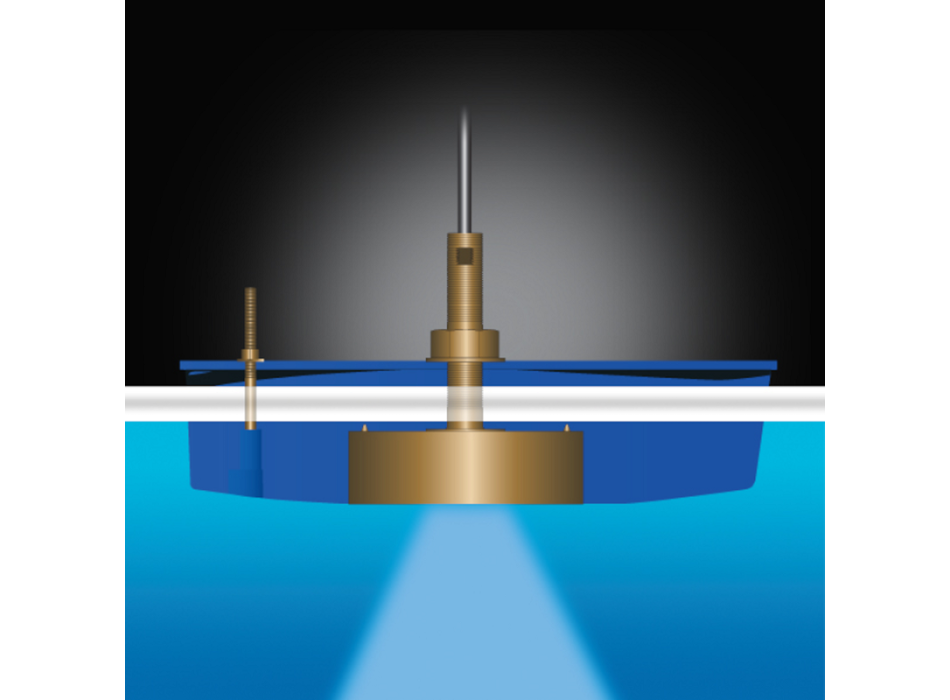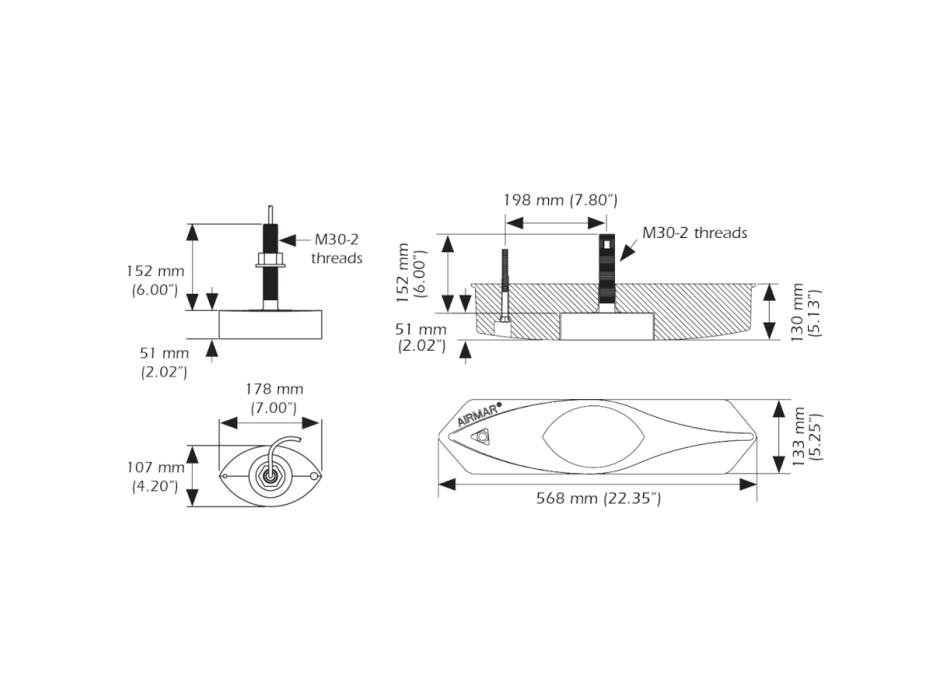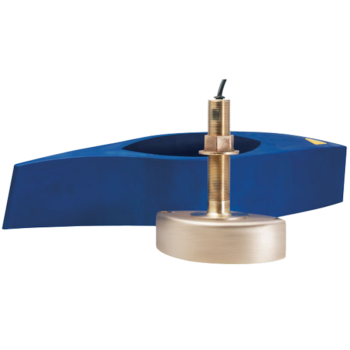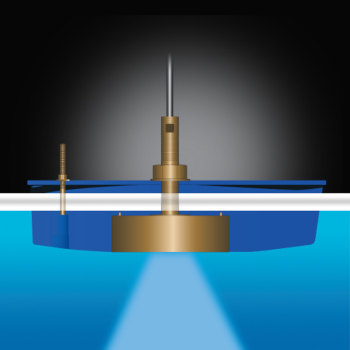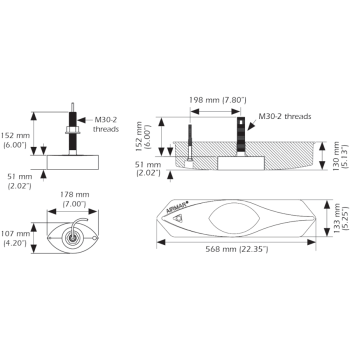LOWRANCE TRANSDUCER B260
1KW BRONZE THROUGH with Fairing block
Frequencies: 50-200khz
Bi-frequency bronze transducer with Fairing Block, 1kw power, echo and temperature, 19/6 ° cone width, 12 m cable, compatible with FCV 575 587 and 588 fishfinders.
Product Number: B260 Fairing block
The factors to consider when choosing the transducer
To determine the transducer that best suits your needs, consider the following factors:
Material
The first point to determine is the material of which the transducer is made.
The plastic transducer is recommended for fiberglass or metal hulls.
The stainless steel transducer is recommended for aluminum or steel hulls.
The bronze transducer is recommended for fiberglass or wooden hulls.
Expanding wood could damage plastic transducers and cause a leak. Installing a stainless steel transducer in a metal hull requires the use of a fairing, available from retailers.
DO NOT install a metal transducer on a positively grounded boat.
Mounting type
The type of mounting is also very important.
Thru-hull transducers with fairing blocks offer the best performance, especially at high speeds.
Thru-hull transducers are ideal for tow boats where good performance is required and there are no hull protrusions.
Internal transducers are fixed directly inside the hull but the performance is slightly reduced.
Transducer output power
The output power refers to the intensity at which the transducer sends the signals expressed in watts RMS.
More power increases the chances of returning echoes in deep water or in poor visibility conditions. It also allows you to view more details such as small fish and structures.
Generally, the higher the power, the deeper you can reach, as well as achieving maximum target separation by eliminating surface noise.
Frequency
The accuracy with which the fish finder locates the bottom and other objects is also determined by the frequency selected based on the depth. Raymarine Depth transducers have two frequencies: LOW (low) or HIGH (high).
HIGH
The high frequency is used for shallow water and is used to obtain more accurate readings at high speeds. When using this frequency, the transducer scans a smaller area but displays more detail. Fewer unwanted echoes and less noise are usually displayed with higher target definition.
LOW
This frequency is used in deep water. Water absorbs ultrasonic pulses at a slower rate, and larger areas can be covered before the signal becomes too weak. The result is a wider cone angle that allows you to analyze a larger portion of the seabed. However, this also means less target definition and separation and more noise. Although low frequencies allow you to explore the water column more deeply, they may also result in an unclear bottom image.
In general, you should use the high frequency for a detailed image in shallow water and then switch to the low frequency for greater depth. The ideal solution is to display both frequencies on a double screen.
Corners of the cone
The transducer concentrates the transmitted waves in a beam. In theory, the impulses are radiated into a cone that widens with increasing depth. In reality, the shape of the beam varies according to the transducer and generally the pulses are also radiated outwards thus producing the side lobes. The following figures show a representation of the actual path taken by the pulses.
Low frequencies have a wider beam angle than high frequencies
However, for our purpose, we will consider the image of a cone. The signal is strongest along the center line of the cone and gradually decreases as it moves away from the center. Wider angles show a larger portion of the bottom at the expense of resolution, because they disperse the power of the transmitter. A smaller cone can concentrate the transmit power more in a smaller area. The cone angles are wider at low frequencies and narrower at high frequencies.
To summarize, a larger cone can detect not only fish directly under the boat but also surrounding fish with less target separation. A narrower cone concentrates the transmitted energy to more accurately locate small details, such as fish or bottom structure, but examines a smaller portion of water.






